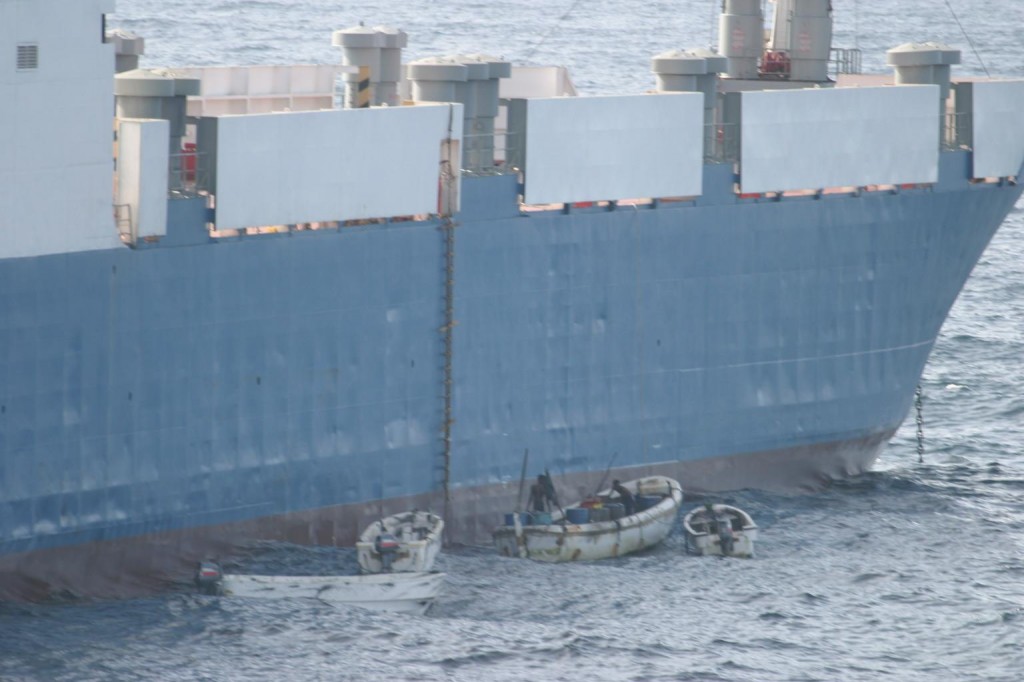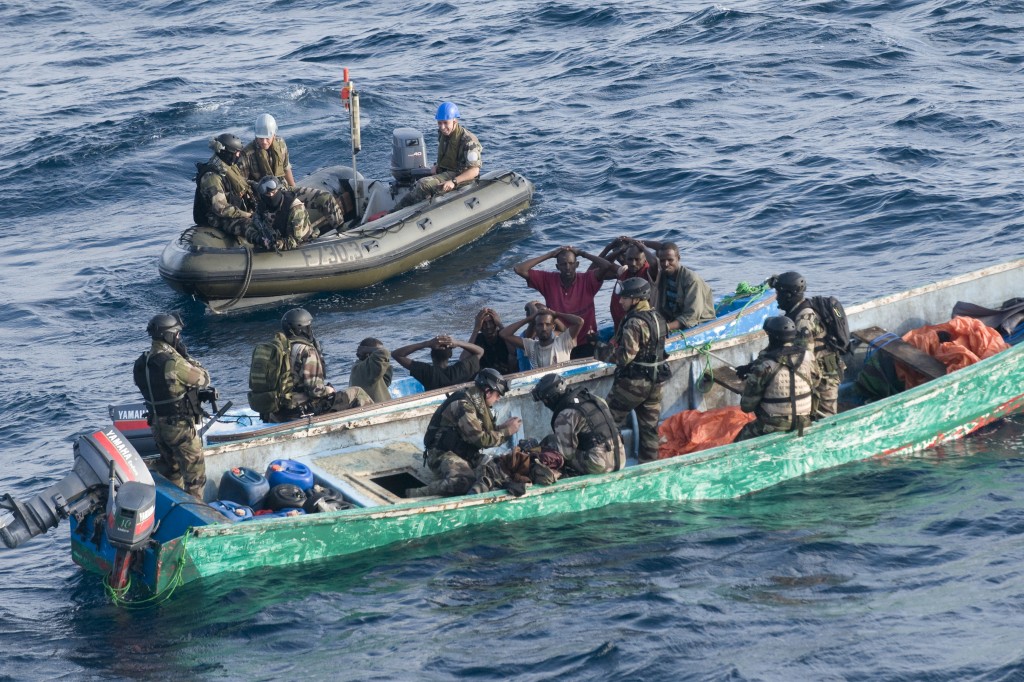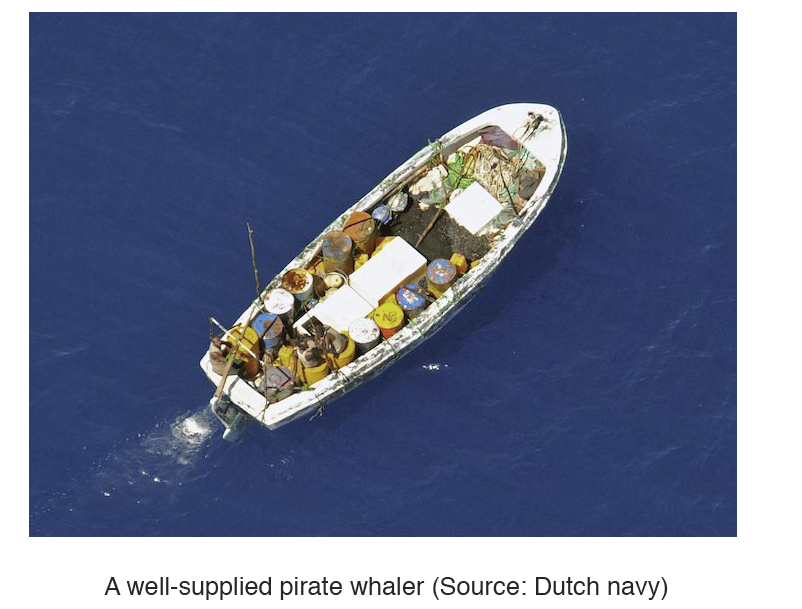By Karsten Von Hoesslin, Senior Analyst, Risk Intelligence
Strategic Insights, No. 28 (November 2010)
04/01/2011 – Evidenced in other parts of the world, particularly in South East Asia, piracy that adapts to countermeasures and re-strategizes is always the most effective. Somali pirates have proven to be no different in terms of ingenuity and tactical adjustment in order to increase their rate of return.
Creeping half way into the late transitional period of 2010, it appears that the map of piracy incidents is just as littered with failed and successful attacks as compared to the previous year.
However, there has been an obvious shift in regional attack patterns: to the south, a new active zone is emerging, which is hugging the Kenyan and Tanzanian coasts and creeping towards the Mozambique Channel. In the north, attacks are stretching beyond the group transit collection point to the top of the Arabian Sea and as far east as India’s exclusive economic zone (EEZ).
During the summer monsoon period as the Red Sea was being littered with suspicious activity reports and false alarms, Risk Intelligence forecasted that one of the new emerging areas for increased incidents would be nearing the Mozambique Channel and to the north in the Arabian Sea past the collection point for the International Recommended Transit Corridor (IRTC).
Although pirates will increasingly need to adjust to both anti-piracy (shipboard) and counter-piracy (naval coalition) activities if they want to be successful, it appears that they are unwilling to raise the stakes within high traffic areas such as the Gulf of Aden and the Somali Basin to challenge the naval operations.
Therefore, for the time being, pirates will choose to avoid naval engagements and search for less dangerous hunting grounds such as to the south and further north in the Arabian Sea. This is a common trend that was evidenced in both the Niger Delta and in South East Asia. In Nigeria, attacks increased dramatically outside of the Bonny River, namely offshore from the Bonny Fairway Buoy where escorts typically began.
In South East Asia, incidents decreased in the Malacca Strait, due to the trilateral patrols by the littoral states, but increased in both the Singapore Strait and to the east in the southern South China Sea. It is only natural that a similar pattern will be seen off the Horn of Africa when naval coalitions have created a far better maritime domain awareness compared to 2007.
Counter-piracy: High end.
Horn of Arica
Horn of Africa piracy, despite its ingenuity, is a relatively simplistic challenge to modern navies and merchant vessels with access to the most sophisticated anti-piracy gadgets. However, despite their simplicity, disrupting (let alone apprehending) pirates is not as easy as it looks.
In addition to reinforcing bolder counter-piracy strategies, an immense amount of hardware is being poured into the region, making surface vessels merely one of multiple tools available in the campaign. As the last transitional period witnessed the introduction of the Landing Ship Transport Dock (LPD) that successfully interdicted pirate skiffs off the Somali shores before they even left territorial waters, this transitional period has welcomed both new aerial and sub-surface assets.
The first major step was enhancing the role of Maritime Patrol and Reconnaissance Aircraft (MPRA). Although this is not a new development within this season, deploying them and increasing their integration is. Initially deployed by France, Spain, Luxembourg, Japan, and soon-to-be Singapore, the MPRAs have played a key role in identifying pirate action groups (PAGs) out in the Indian Ocean as well as in the Gulf of Aden. In addition to guiding surface assets to the scene, the MPRAs are able to broadcast an advisory within a 130 nautical mile surface area, warning ships and alerting the pirates (if they possess VHF equipment) that they have been spotted.
 Somali pirates in small boats were able to hijack the MV Faina, a Belize-flagged cargo ship owned and operated by ‘Kaalbye Shipping Ukraine.” The ship was carrying a cargo of Ukrainian T-72 tanks and related equipment. It had no on board security when it was attacked on Sept. 25, 2008, and was forced to proceed to an anchorage off the Somali Coast. (Credit: US Naval Forces Central Command Public Affairs)
Somali pirates in small boats were able to hijack the MV Faina, a Belize-flagged cargo ship owned and operated by ‘Kaalbye Shipping Ukraine.” The ship was carrying a cargo of Ukrainian T-72 tanks and related equipment. It had no on board security when it was attacked on Sept. 25, 2008, and was forced to proceed to an anchorage off the Somali Coast. (Credit: US Naval Forces Central Command Public Affairs)
The next asset introduced in the counter-piracy campaign was the submarine. Despite at first being met with skepticism, it played a key role in early detection and surveillance. The Dutch deployed ZEELEEUW, which spent two months hovering below the surface and collecting MPRAs, which often must fly at low altitude to identify the PAG, the ZEELEEUW was able to remain undetected from PAGs as it monitored them from a distance of as little as 100 meters. This was unique in that the pirates did not know that they were being watched and allowed for the coalition to study their trends in terms of routing, manning, and logistical arrangement. The identified PAGs would later be disrupted by surface assets.
Finally, the French recently deployed a Boeing E-3F Airborne Warning and Control System (AWACS) to support both MPRAs and surface assets in detecting PAGs. The aircraft is able to cover a 300 nautical mile radius, doubling that of the MPRA, and can do so at high altitude to avoid detection and raise suspicion. It then relays the information to the MPRA, which swoops in closer to confirm that it is a PAG before a surface asset moves in to intercept. Thus far the AWACS has played a key role in at least five successful interceptions.
However, all this new gadgetry comes at an unknown cost.
On 18 November, coalition forces engaged in perhaps what were the most expensive counter-piracy interdictions in light of the result. Approximately 300 nautical miles from Mahe, Seychelles the French AWACS detected an abnormal radar contact. It dispatched the Luxembourg MPRA to investigate, which later confirmed that it was a PAG moving westbound back to the African coast. Upon confirmation, the MPRA informed the Seychelles Coast Guard vessel ANDROMACHE, which interdicted the PAG after a pursuit. It was suspected that this particular PAG was responsible for two failed attacks the previous day against the tuna trawlers TALENDUIC and CAP SAINTE MARIE. Upon boarding, the Seychelles coastguard apprehended five suspects in a mother skiff and an attack skiff. A third skiff with an unknown number of pirates fled the scene.
After dismantling the PAG by sinking the mother skiff and stripping the group of their weapons, the suspects were released in the attack skiff and sent back to Somalia. This incident, which very likely may have prevented further attacks by the PAG, cost a small fortune when considering the operational costs in utilizing two aircraft and then using a one of two Seychelles coastguard vessels to interdict pirates suspected of having attacked vessels the previous day.
Furthermore, without sufficient evidence of being involved in a failed attack, the suspects were let go, while the third skiff escaped completely. This operation was merely one of many that involve multiple assets whose only aim is to disrupt pirate activity, which comes at an exuberant financial expense given the sophistication of the threat.
Returning to the notion of simplicity, the 18 November incident also reveals the challenges of defeating a ‘rag-tag’ threat armed with rusted Kalashnikovs and RPG7s in rickety skiffs despite the coalition’s technological superiority. It is this reality that should open the eyes of all observers in realizing that the only solution to completely reducing piracy is to resolve it on land…. It is worthwhile mentioning that the situation on land has yet to improve and is far from doing so. The cost of piracy is often only reflected in terms of ransom payments. However, in addition to the overall expenses born by the shipping industry, the cost of submarines, multiple aircraft types, and surface assets exponentially increases the overall financial burden that piracy causes.
Counter piracy: Low budget
Further to the south, where the new hot spot has emerged, Kenyan and Tanzanian authorities are scrambling to secure their waterways, which have become prime hunting grounds for ships calling on Mombasa and Dares Salam. It does raise a question as to why after three intensive years of fighting pirates at sea; Kenya and Tanzania are still so poorly equipped to secure not only their trading area of interest, but literally their own territorial waters. The AFRICAN EAGLE was attacked 10 nautical miles from the Mombasa pilothouse and it appears that the Kenyans are only conducting counter-piracy operations when suspects accidentally board their patrol boats with intent to hijack as witnessed on 12 November when the KNS GALANA was boarded and the suspects subsequently were shot dead.
Kenya’s navy appears to be just as weak now as it was in 2005 and long before piracy became a major threat to shipping in the area. It would only seem logical that as the threat increased and twisted its way south over the years that Somalia’s neighbors be prepared for the worst. This is how the Seychelles were able to respond to piracy, and yet Kenya and Tanzania reversed in capability.
It seems that the two coastal neighbors are less qualified in dealing with piracy than before there even was a significant threat. In fact, it has become such a problem for Kenya that it must implement a “maritime security corridor,” which is essentially just a safe area for anchored vessels. It is essentially like the state police claiming that only one highway can be patrolled.
In addition to the poor capabilities of the Kenyan Navy, there are few coalition vessels available to patrol the southern waters, leaving the area very much exposed, which explains why the region is such an appealing hunting ground.
New trends
Thus far during the transitional period, ten vessels have been hijacked within the Kenyan/Tanzanian exclusive economic zone. Piracy incidents in the south surged after a brief series of incidents occurring in the Gulf of Aden. Due a significant number of failed attacks and successful counter piracy interdictions, major groups moved away from the Gulf of Aden to both the south and to the northern Arabian Sea. Although there has not been a concentration in the Mozambique Channel, the hunting grounds off the Kenya and Tanzania coasts have proven to be opportune enough and, more importantly, relatively low risk given the minimal transit time, minimal surface combatants, and potential for forward operating stops in the south of Somalia.
Although the southern parts of Somalia are predominantly Al Shebab territory, between Ras Kaambooni and Kismayo, there are plenty of remote islets where forward operating areas are possible. Small fuel depots and other supplies could easily be unloaded from mother skiffs and stored on the islands.
To the far north in the Arabian Sea, pirates have been active as far as 20°N and as far east as 069°E. The hijacking of the heavy load carrier TAI AN KOU on 20 November 2010 demonstrated a new reach well beyond incidents previously recorded this season and the attempted hijacking of the crude oil tanker STARLIGHT VENTURE gained Asia-Pacific attention due to it being in India’s EEZ (and therefore in Asian waters). Further south in the Indian Ocean, pirates appear to be using two main movements: the counter-equatorial current and a current moving back to the coast from the northeast.
 The French navy has arrested nine suspected Somali pirates, foiling their attempt to hijack a cargo ship.The French Frigate Le Floreal, which was patrolling the waters off the coast of Somalia, dispatched a navy military helicopter on january 27, 2009, after receiving a distress call from the cargo vessel African Ruby, which came under attack from armed men on board two speeding boats. The EU mission Atalante, a coalition that groups eight EU countries, began operations off the coast of Somalia on December 8 to try to stem the growing piracy in what is the first naval mission in the history of the bloc. (Credit: European Commission)
The French navy has arrested nine suspected Somali pirates, foiling their attempt to hijack a cargo ship.The French Frigate Le Floreal, which was patrolling the waters off the coast of Somalia, dispatched a navy military helicopter on january 27, 2009, after receiving a distress call from the cargo vessel African Ruby, which came under attack from armed men on board two speeding boats. The EU mission Atalante, a coalition that groups eight EU countries, began operations off the coast of Somalia on December 8 to try to stem the growing piracy in what is the first naval mission in the history of the bloc. (Credit: European Commission)
Both allow for movement to and from the 067-069°E mark. Although the counter equatorial current has yet to be as popular as in the previous transitional period where vessels remain at risk as far as the 70°E mark, this tactic will likely increase towards the end of this transitional period. Furthermore, in light of the increased use of hijacked or ‘on-loan’ dhows as well as hijacked merchant ships in the northern theatre, pirates are able to move more flexibly and rely less on currents. Once deployed, however, PAGs will be reliant on the currents to get back home if they fail to successfully hijack a vessel.
Closer to the Gulf of Aden, the collection point east of the IRTC has become a favoured hunting ground as well. Although there have been a number of successful hijackings (defined by Risk Intelligence as successfully boarding the vessel), the incidents were quickly thwarted by a combination of citadel use and coalition response forcing the pirates to disembark. Between 14:28°N 054:29°E and 16:07°N and 059:09°E, vessels are targeted knowing that they have yet to enter or recently have just left a group transit or national convoy and therefore are exposed.
New(er) tactics
In this transitional period, there have been two noteworthy observations marking a change in tactics: fewer skiffs reported in individual attacks; and a greater degree of violence employed. It is not yet possible to support the theory that pirates will only escalate the level of violence if met with continued resistance both from coalition forces and anti-piracy defenses.
There has been a noted increase, however, in the use of violence and firepower deployed against ships. Since September, the number of reports claiming RPG fire has increased and in November a unique pirate vessel was reported, which possessed a fixed heavy machine gun on the deck. It is the first time such a weapon has been seen in an offensive capacity with pirates. In addition, there have been cases of pirates attacking a vessel with an armed team and despite the firing of warning shots, the pirates will fire at the ship and only abort once the armed team returns fire directly at the suspect skiff(s).
Thus far, however, there have been no reported cases of pirates using explosives or other tactics once they have boarded and attempted to gain control of the ship and force out the crew from the citadel or safe room. From a future trends perspective, this will become the next challenge and pirate groups are already studying patterns and citadel cases as well as training on hijacked ships in order to tackle this successful counter-piracy measure that has prevented a number of hijackings from taking place.
Although the bulk of incidents that occurred in September involved a traditional PAG structure consisting of two-to-three skiffs, a number of failed attacks in October and early November involved just one skiff. This is possibly due to what is essentially a war of attrition whereby attack teams must make the most of their resources and spread out. This is interesting since the bulk of PAG reports still involve the traditional two-to-three skiff set up, which is typically observed en route to or from the hunting ground using either the northeast or the counter equatorial current.
Piracy off the Horn of Africa remains fluid and dynamic. The international naval effort has expanded its efforts by diversifying in assets that have helped disrupt a number of PAGs. However, this merely revels how many skiffs are being put to sea and, despite the increased counter-piracy effort, it appears that there is no shortage of will from shore.
Additionally, the technologically superior international coalition is battling a relatively severe, yet simplistic threat that comes at a significant cost, even if a hijacking is prevented. Despite the decrease in attacks in the Gulf of Aden, the fact that PAGs are able to operate within the territorial waters of Kenya, the EEZ of Tanzania, as well as ride the currents deep into the Indian Ocean and to the north of the Arabian Sea reveals that the containment of piracy is far from over.
As with every transitional period, lessons are learned ensuring that once the next monsoon passes and the weather calms, there will be new additions to patterns in trends and tactics on behalf of the pirates and the need to adjust to combat them in the realm of counter and anti-piracy initiatives. Unfortunately, however, it will be another round of much of the same on land – a lack of progress.



